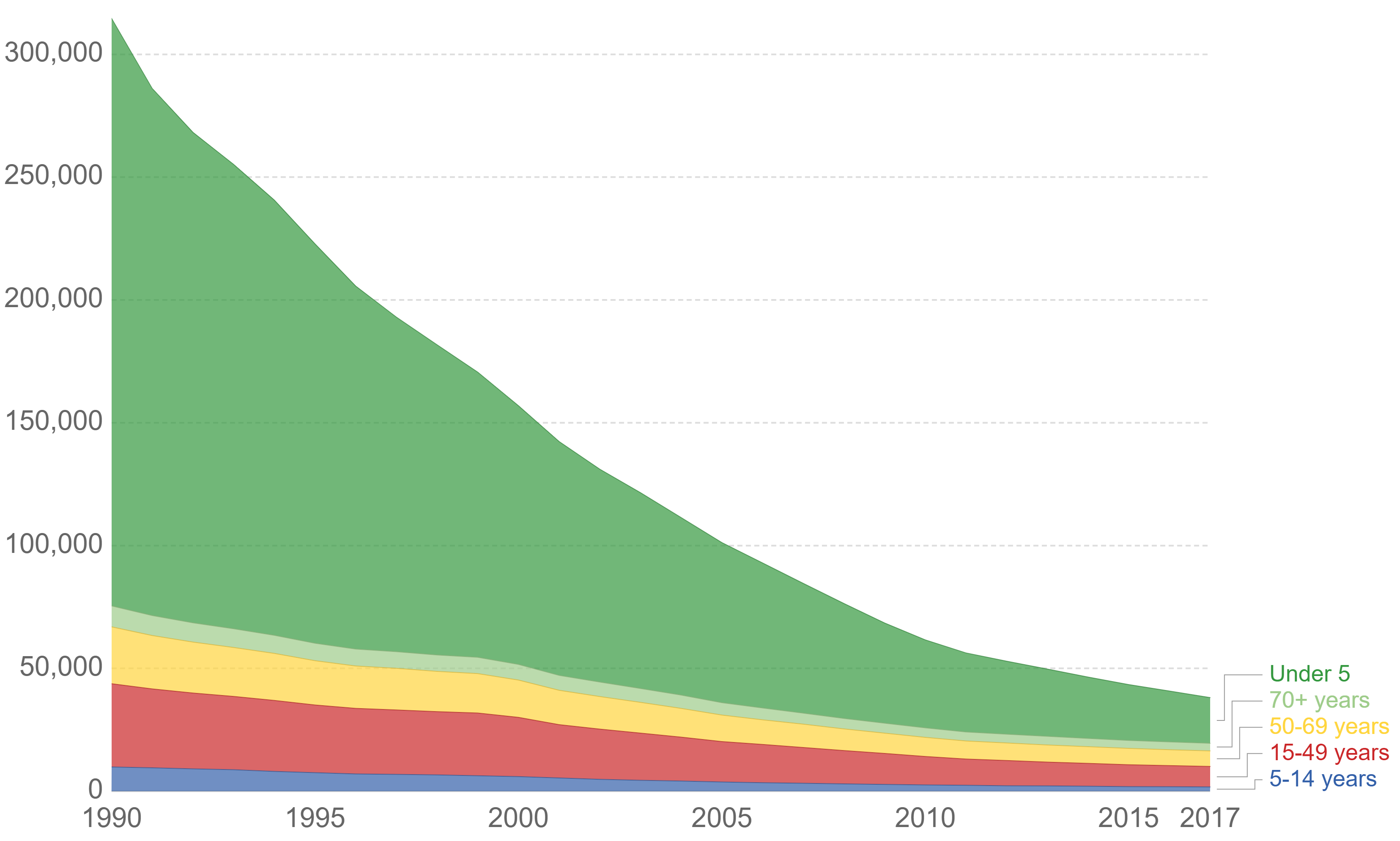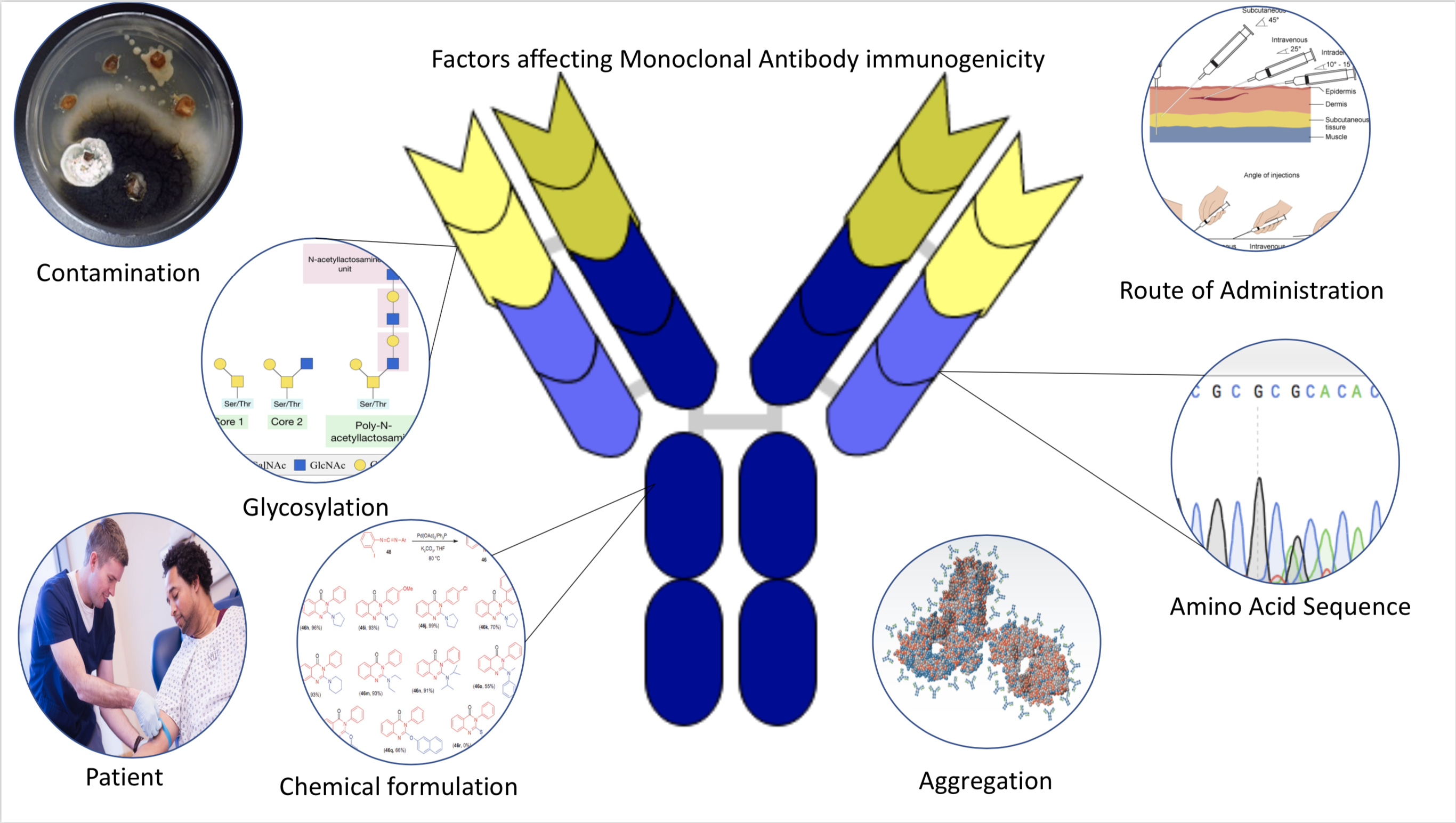|
Toxoids
A toxoid is an inactivated toxin (usually an exotoxin) whose toxicity has been suppressed either by chemical (formalin) or heat treatment, while other properties, typically immunogenicity, are maintained. Toxins are secreted by bacteria, whereas toxoids are altered form of toxins; toxoids are ''not'' secreted by bacteria. Thus, when used during vaccination, an immune response is mounted and immunological memory is formed against the molecular markers of the toxoid without resulting in toxin-induced illness. Such a preparation is also known as an anatoxin. There are toxoids for prevention of diphtheria, tetanus and botulism. Toxoids are used as vaccines because they induce an immune response to the original toxin or increase the response to another antigen since the toxoid markers and toxin markers are preserved. For example, the tetanus toxoid is derived from the tetanospasmin produced by '' Clostridium tetani''. The latter causes tetanus and is vaccinated against by the DTaP ... [...More Info...] [...Related Items...] OR: [Wikipedia] [Google] [Baidu] |
DTaP
The DPT vaccine or DTP vaccine is a class of combination vaccines to protect against three infectious diseases in humans: diphtheria, pertussis (whooping cough), and tetanus (lockjaw). The vaccine components include diphtheria and tetanus toxoids, and either killed whole cells of the bacterium that causes pertussis or pertussis antigens. The term toxoid refers to vaccines which use an inactivated toxin produced by the pathogen which they are targeted against to generate an immune response. In this way, the toxoid vaccine generates an immune response which is targeted against the toxin which is produced by the pathogen and causes disease, rather than a vaccine which is targeted against the pathogen itself. The whole cells or antigens will be depicted as either "DTwP" or "DTaP", where the lower-case "w" indicates whole-cell inactivated pertussis and the lower-case "a" stands for "acellular". In comparison to alternative vaccine types, such as live attenuated vaccines, the DTP ... [...More Info...] [...Related Items...] OR: [Wikipedia] [Google] [Baidu] |
Vaccines
A vaccine is a biological preparation that provides active acquired immunity to a particular infectious or malignant disease. The safety and effectiveness of vaccines has been widely studied and verified. A vaccine typically contains an agent that resembles a disease-causing microorganism and is often made from weakened or killed forms of the microbe, its toxins, or one of its surface proteins. The agent stimulates the body's immune system to recognize the agent as a threat, destroy it, and recognize further and destroy any of the microorganisms associated with that agent that it may encounter in the future. Vaccines can be prophylactic (to prevent or alleviate the effects of a future infection by a natural or "wild" pathogen), or therapeutic (to fight a disease that has already occurred, such as cancer). Some vaccines offer full sterilizing immunity, in which infection is prevented. The administration of vaccines is called vaccination. Vaccination is the most effective ... [...More Info...] [...Related Items...] OR: [Wikipedia] [Google] [Baidu] |
Exotoxin
An exotoxin is a toxin secreted by bacteria. An exotoxin can cause damage to the host by destroying cells or disrupting normal cellular metabolism. They are highly potent and can cause major damage to the host. Exotoxins may be secreted, or, similar to endotoxins, may be released during lysis of the cell. Gram negative pathogens may secrete outer membrane vesicles containing lipopolysaccharide endotoxin and some virulence proteins in the bounding membrane along with some other toxins as intra-vesicular contents, thus adding a previously unforeseen dimension to the well-known eukaryote process of membrane vesicle trafficking, which is quite active at the host–pathogen interface. They may exert their effect locally or produce systemic effects. Well-known exotoxins include: botulinum toxin produced by ''Clostridium botulinum''; ''Corynebacterium diphtheriae'' toxin, produced during life-threatening symptoms of diphtheria; tetanospasmin produced by '' Clostridium tetani''. The t ... [...More Info...] [...Related Items...] OR: [Wikipedia] [Google] [Baidu] |
Tetanus Toxoid
Tetanus vaccine, also known as tetanus toxoid (TT), is a toxoid vaccine used to prevent tetanus. During childhood, five doses are recommended, with a sixth given during adolescence. After three doses, almost everyone is initially immune, but additional doses every ten years are recommended to maintain immunity. A booster shot should be given within 48 hours of an injury to people whose immunization is out of date. Confirming that pregnant women are up to date on tetanus immunization during each pregnancy can prevent both maternal and neonatal tetanus. The vaccine is very safe, including during pregnancy and in those with HIV/AIDS. Redness and pain at the site of injection occur in between 25% and 85% of people. Fever, feeling tired, and minor muscle pain occurs in less than 10% of people. Anaphylaxis, Severe allergic reactions occur in fewer than one in 100,000 people. A number of vaccine combinations include the tetanus vaccine, such as DTaP and Tdap, which contain diph ... [...More Info...] [...Related Items...] OR: [Wikipedia] [Google] [Baidu] |
Botulism
Botulism is a rare and potentially fatal illness caused by botulinum toxin, which is produced by the bacterium ''Clostridium botulinum''. The disease begins with weakness, blurred vision, Fatigue (medical), feeling tired, and trouble speaking. This may then be followed by weakness of the arms, chest muscles, and legs. Vomiting, swelling of the abdomen, and diarrhea may also occur. The disease does not usually affect consciousness or cause a fever. Botulism can occur in several ways. The bacterial spores which cause it are common in both soil and water and are very resistant. They produce the botulinum toxin when exposed to low oxygen levels and certain temperatures. Foodborne botulism happens when food containing the toxin is eaten. Infant botulism instead happens when the bacterium develops in the intestines and releases the toxin. This typically only occurs in children less than one year old, as protective mechanisms against development of the bacterium develop after that age ... [...More Info...] [...Related Items...] OR: [Wikipedia] [Google] [Baidu] |
Pertussis Vaccine
Pertussis vaccine is a vaccine that protects against whooping cough (pertussis). There are two main types: whole-cell vaccines and acellular vaccines. The whole-cell vaccine is about 78% effective while the acellular vaccine is 71–85% effective. The effectiveness of the vaccines appears to decrease by between 2 and 10% per year after vaccination, with a more rapid decrease with the acellular vaccines. The vaccine is only available in combination with tetanus and diphtheria vaccines (DPT vaccine). Pertussis vaccine is estimated to have saved over 500,000 lives in 2002. Vaccinating the mother during pregnancy may protect the baby. The World Health Organization and the US Centers for Disease Control and Prevention recommend all children be vaccinated for pertussis and that it be included in Vaccination schedule, routine vaccinations. Three doses starting at six weeks of age are typically recommended in young children. Additional doses may be given to older children and adults. ... [...More Info...] [...Related Items...] OR: [Wikipedia] [Google] [Baidu] |
Immunogenicity
Immunogenicity is the ability of a foreign substance, such as an antigen, to provoke an immune response in the body of a human or other animal. It may be wanted or unwanted: * Wanted immunogenicity typically relates to vaccines, where the injection of an antigen (the vaccine) provokes an immune response against the pathogen, protecting the organism from future exposure. Immunogenicity is a central aspect of vaccine development. * Unwanted immunogenicity is an immune response by an organism against a therapeutic antigen. This reaction leads to production of anti-drug-antibodies (ADAs), inactivating the therapeutic effects of the treatment and potentially inducing adverse effects. A challenge in biotherapy is predicting the immunogenic potential of novel protein therapeutics. For example, immunogenicity data from high-income countries are not always transferable to low-income and middle-income countries. Another challenge is considering how the immunogenicity of vaccines changes wi ... [...More Info...] [...Related Items...] OR: [Wikipedia] [Google] [Baidu] |
Tetanus Immune Globulin
Anti-tetanus immunoglobulin, also known as tetanus immune globulin (TIG) and tetanus antitoxin, is a medication made up of antibodies against the tetanus toxin. It is used to prevent tetanus in those who have a wound that is at high risk, have not been fully vaccinated with tetanus toxoid, or have HIV/AIDS. It is used to treat tetanus along with antibiotics and muscle relaxants. It is given by injection into a muscle. Part of the dose is injected at the site of the wound. Common side effects include pain at the site of injection and fever. Allergic reactions including anaphylaxis may rarely occur. There is also a very low risk of the spread of infections such as viral hepatitis and HIV/AIDS with the human version. Use during pregnancy and lactation is acceptable. It is made from either human or horse blood plasma. The immunoglobulin is categorized as immunoglobulin G (IgG). Since the tetanus toxin permanently binds to human tissues, only unbounded molecules can be neutraliz ... [...More Info...] [...Related Items...] OR: [Wikipedia] [Google] [Baidu] |
Pertussis Toxin
Pertussis toxin (PT) is a protein-based AB5-type exotoxin produced by the bacterium '' Bordetella pertussis'', which causes whooping cough. PT is involved in the colonization of the respiratory tract and the establishment of infection. Research suggests PT may have a therapeutic role in treating a number of common human ailments, including hypertension, viral infection, and autoimmunity. History PT clearly plays a central role in the pathogenesis of pertussis although this was discovered only in the early 1980s. The appearance of pertussis is quite recent, compared with other epidemic infectious diseases. The earliest mention of pertussis, or whooping cough, is of an outbreak in Paris in 1414. This was published in Moulton's The Mirror of Health, in 1640. Another epidemic of pertussis took place in Paris in 1578 and was described by a contemporary observer, Guillaume de Baillou. Pertussis was well known throughout Europe by the middle of the 18th century. Jules Borde ... [...More Info...] [...Related Items...] OR: [Wikipedia] [Google] [Baidu] |
Clostridium Botulinum
''Clostridium botulinum'' is a Gram-positive bacteria, gram-positive, Bacillus (shape), rod-shaped, Anaerobic organism, anaerobic, endospore, spore-forming, Motility, motile bacterium with the ability to produce botulinum toxin, which is a neurotoxin. ''C. botulinum'' is a diverse group of pathogenic bacteria. Initially, they were grouped together by their ability to produce botulinum toxin and are now known as four distinct groups, ''C. botulinum'' groups I–IV. Along with some strains of ''Clostridium butyricum'' and ''Clostridium baratii'', these bacteria all produce the toxin. Botulinum toxin can cause botulism, a severe Flaccid paralysis, flaccid paralytic disease in humans and other animals, and is the most potent toxin known to science, natural or synthetic, with a lethal dose of 1.3–2.1 ng/kg in humans.(2010). Chapter 19. ''Clostridium'', ''Peptostreptococcus'', ''Bacteroides'', and Other Anaerobes. In Ryan K.J., Ray C (Eds), ''Sherris Medical Microbiology'', 5th ... [...More Info...] [...Related Items...] OR: [Wikipedia] [Google] [Baidu] |
Botulinum Toxin
Botulinum toxin, or botulinum neurotoxin (commonly called botox), is a neurotoxic protein produced by the bacterium ''Clostridium botulinum'' and related species. It prevents the release of the neurotransmitter acetylcholine from axon endings at the neuromuscular junction, thus causing flaccid paralysis. The toxin causes the disease botulism. The toxin is also used commercially for medical and cosmetic purposes. Botulinum toxin is an acetylcholine release inhibitor and a neuromuscular blocking agent. The seven main types of botulinum toxin are named types A to G (A, B, C1, C2, D, E, F and G). New types are occasionally found. Types A and B are capable of causing disease in humans, and are also used commercially and medically. Types C–G are less common; types E and F can cause disease in humans, while the other types cause disease in other animals. Botulinum toxins are among the most potent toxins known to science. Intoxication can occur naturally as a result of eithe ... [...More Info...] [...Related Items...] OR: [Wikipedia] [Google] [Baidu] |






